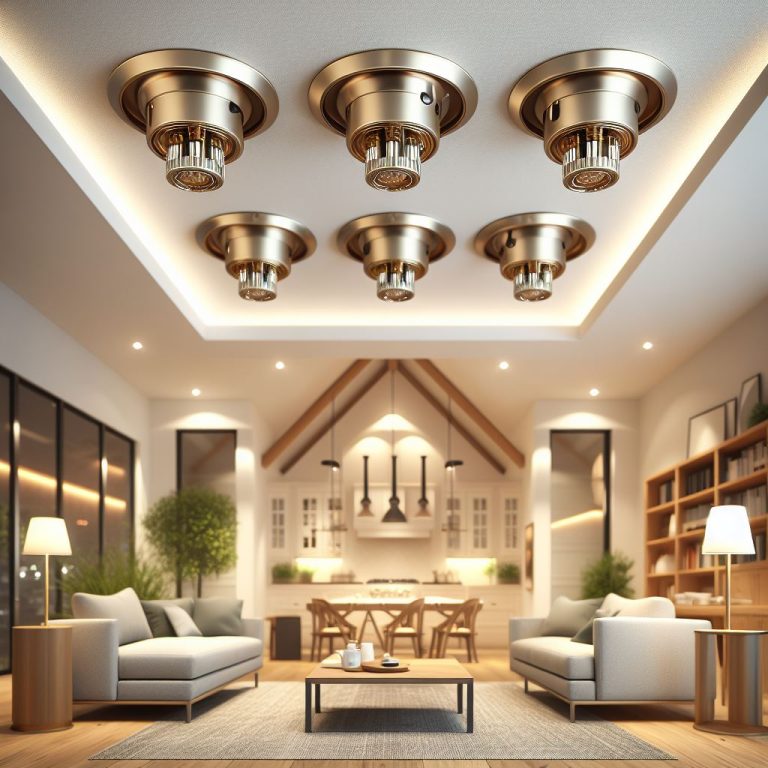When it comes to fire safety, every component of a building plays a crucial role in ensuring the well-being of its occupants. Fire door stops, often overlooked but integral to fire protection systems, come in a variety of types, each designed with specific mechanisms and advantages.
In this article, we delve into the different types of fire door stops, unraveling their functionalities, and identifying ideal use cases. From electromagnetic door holds to floor magnets and concealed closers, not all fire door stops are created equal.
Also, should you even use a door stop? They are not meant to be used on actual fire doors, as that can disrupt the flow of traffic. Door stops on fire doors are considered actual fire hazards. You are not supposed to wedge or somehow prop open a fire door, just as you are not supposed to block one.
1. Electromagnetic Door Holds
One of the most advanced and widely used types of fire door stops is the electromagnetic door hold. This mechanism employs an electromagnetic device to keep the door open in normal circumstances. In the event of a fire alarm activation or power failure, the electromagnet releases, allowing the door to close and form a barrier against the spread of fire. The advantages of this type include its efficiency in holding doors open for daily convenience and its automatic response to fire safety triggers.
2. Floor Magnets
Floor magnets are another popular choice for fire door stops, known for their simplicity and reliability. These devices consist of a magnet installed on the floor and a metal plate on the bottom of the door. The magnetic force holds the door open under normal conditions, and in the presence of a fire alarm, the door is released to close automatically. Floor magnets are easy to install and maintain, making them a cost-effective solution for many fire safety applications.
3. Concealed Closers
Concealed closers offer a discreet and aesthetically pleasing solution for fire door stops. Unlike surface-mounted closers, concealed closers are hidden within the door or frame, providing a cleaner look without compromising functionality. These closers use hydraulic or pneumatic mechanisms to control the door’s closing speed and force. Concealed closers are ideal for locations where the visual appearance of the door is a priority while still ensuring efficient fire door operation.
4. Spring Door Stops
Spring door stops operate on a straightforward mechanical principle. A spring-loaded mechanism allows the door to remain open under normal circumstances. In the event of a fire, the heat activates the fusible link in the spring, causing it to release and allowing the door to close automatically. While not as sophisticated as electromagnetic or concealed closers, spring door stops offer a reliable and cost-effective solution for basic fire safety requirements.
5. Overhead Door Closers
Overhead door closers are a traditional yet highly effective type of fire door stop. Mounted on the door frame, these closers control the closing speed and force of the door. In case of a fire alarm, the closer ensures that the door closes promptly and securely. Overhead door closers are versatile and suitable for various door types, making them a common choice in commercial and residential settings.
Ideal Use Cases
- Electromagnetic Door Holds: Suitable for areas with high foot traffic, such as commercial buildings, hospitals, and educational institutions.
- Floor Magnets: Ideal for locations where simplicity and cost-effectiveness are prioritized, such as residential buildings and small businesses.
- Concealed Closers: Perfect for environments where aesthetics play a significant role.
- Spring Door Stops: Cost-effective and reliable solution for basic fire safety needs in residential buildings.
- Overhead Door Closers: Versatile and widely applicable.

The Difference A Door Can Make…
FAQ
Fire door stops play a critical role in fire safety by preventing the spread of fire and smoke within a building. They are designed to hold doors open for everyday convenience while automatically closing them in the event of a fire, creating a barrier that helps contain the fire and protect occupants.
Electromagnetic door holds use an electromagnet to keep doors open during normal conditions. In the event of a fire alarm activation or power failure, the electromagnet releases, allowing the door to close automatically.
This mechanism ensures that fire doors are functional for daily use while responding swiftly to emergency situations.
Concealed closers are versatile and can be used with various door types. These closers, hidden within the door or frame, offer a discreet and aesthetically pleasing solution.
They are particularly well-suited for locations where the visual appearance of the door is a priority, such as upscale hotels, modern office spaces, and architectural settings.
Floor magnets are appreciated for their simplicity, reliability, and cost-effectiveness. They consist of a magnet installed on the floor and a metal plate on the door, creating a magnetic force that holds the door open. In case of a fire alarm, the door is released to close automatically.
Floor magnets are easy to install, maintain, and provide an effective solution for various fire safety applications.
Fire door stops are versatile and can be used in both residential and commercial settings. The choice of the type of fire door stop depends on factors such as the specific fire safety requirements of the building, aesthetic considerations, and the level of functionality needed.
Many types, including floor magnets and spring door stops, offer practical solutions for residential fire safety.
Conclusion
Understanding the various types of fire door stops is crucial for implementing effective fire safety measures. Whether opting for the advanced technology of electromagnetic door holds, the simplicity of floor magnets, the discreet nature of concealed closers, the reliability of spring door stops, or the versatility of overhead door closers, each type serves a specific purpose in safeguarding lives and property in the event of a fire.
Understanding how and where to properly install fire door stops in your home is just the beginning. Although, there are many other fire safety considerations to think over when remodeling or buying a new home. We recommend looking into a fire extinguisher to keep in the home, as well as electrical fire prevention methods when remodeling or buying an older home.




